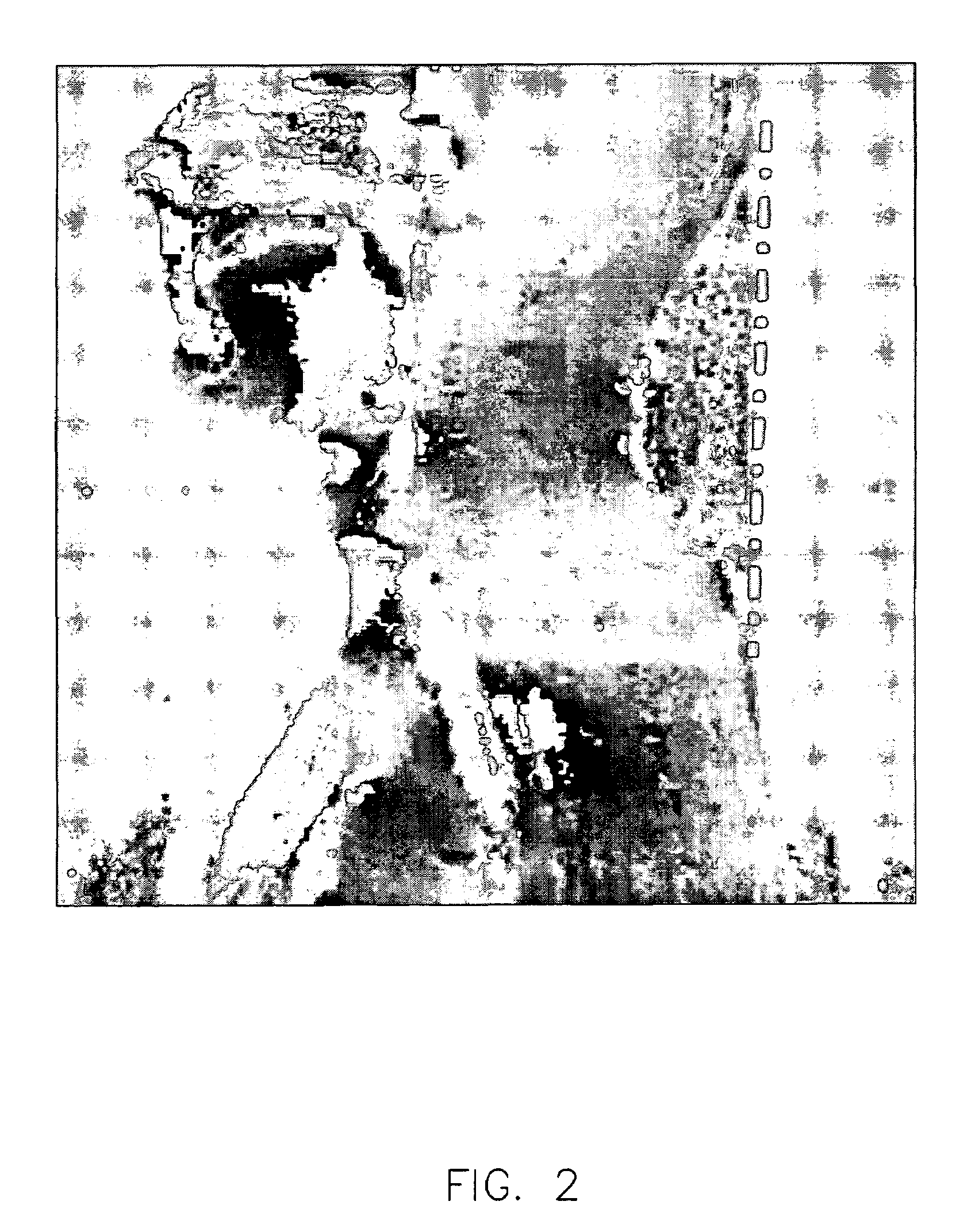Method and apparatus for enhanced fat saturation during MRI
a magnetic resonance imaging and enhanced fat technology, applied in the field of enhanced fat saturation during mri, can solve the problems of reducing the sensitivity of mri for certain disease processes, affecting and affecting the sensitivity of mri for certain diseases, so as to improve the homogeneity of magnetic field
- Summary
- Abstract
- Description
- Claims
- Application Information
AI Technical Summary
Benefits of technology
Problems solved by technology
Method used
Image
Examples
Embodiment Construction
[0032]Now referring to the drawings in detail wherein like numbered elements refer to like elements throughout, FIG. 1 shows a map of magnetic field inhomogeneity. In a homogeneous field, the cross section of the person would be a uniform gray color. However, as shown, the shading varies from black to white due to the local inhomogeneity caused by the curvature of the neck. The dashed line from back of the torso to the back of the head is used to show the amount of inward curvature of the neck. Magnetic flux density is a vector quantity, defined by both a magnitude and a direction. The direction of the magnetic flux density in the magnet bore center is aligned parallel with the cylindrical bore magnet, usually annotated in images as the Superior-Inferior direction. From the torso to the head, the direction of the magnetic flux density lines are distorted due to the change in geometry in the neck region.
[0033]FIG. 2 shows a map of magnetic field inhomogeneity wherein the image has be...
PUM
 Login to View More
Login to View More Abstract
Description
Claims
Application Information
 Login to View More
Login to View More - R&D
- Intellectual Property
- Life Sciences
- Materials
- Tech Scout
- Unparalleled Data Quality
- Higher Quality Content
- 60% Fewer Hallucinations
Browse by: Latest US Patents, China's latest patents, Technical Efficacy Thesaurus, Application Domain, Technology Topic, Popular Technical Reports.
© 2025 PatSnap. All rights reserved.Legal|Privacy policy|Modern Slavery Act Transparency Statement|Sitemap|About US| Contact US: help@patsnap.com



